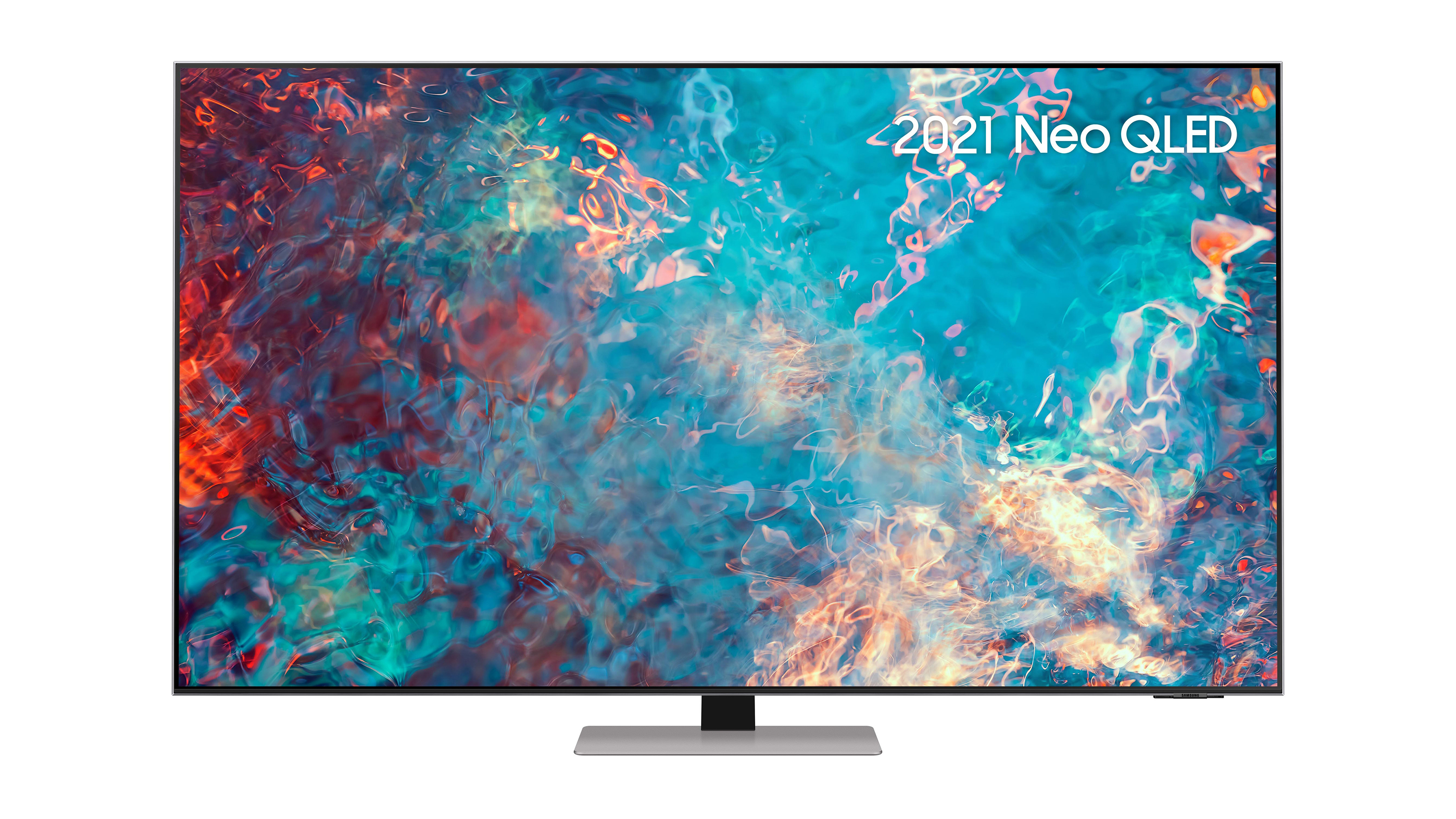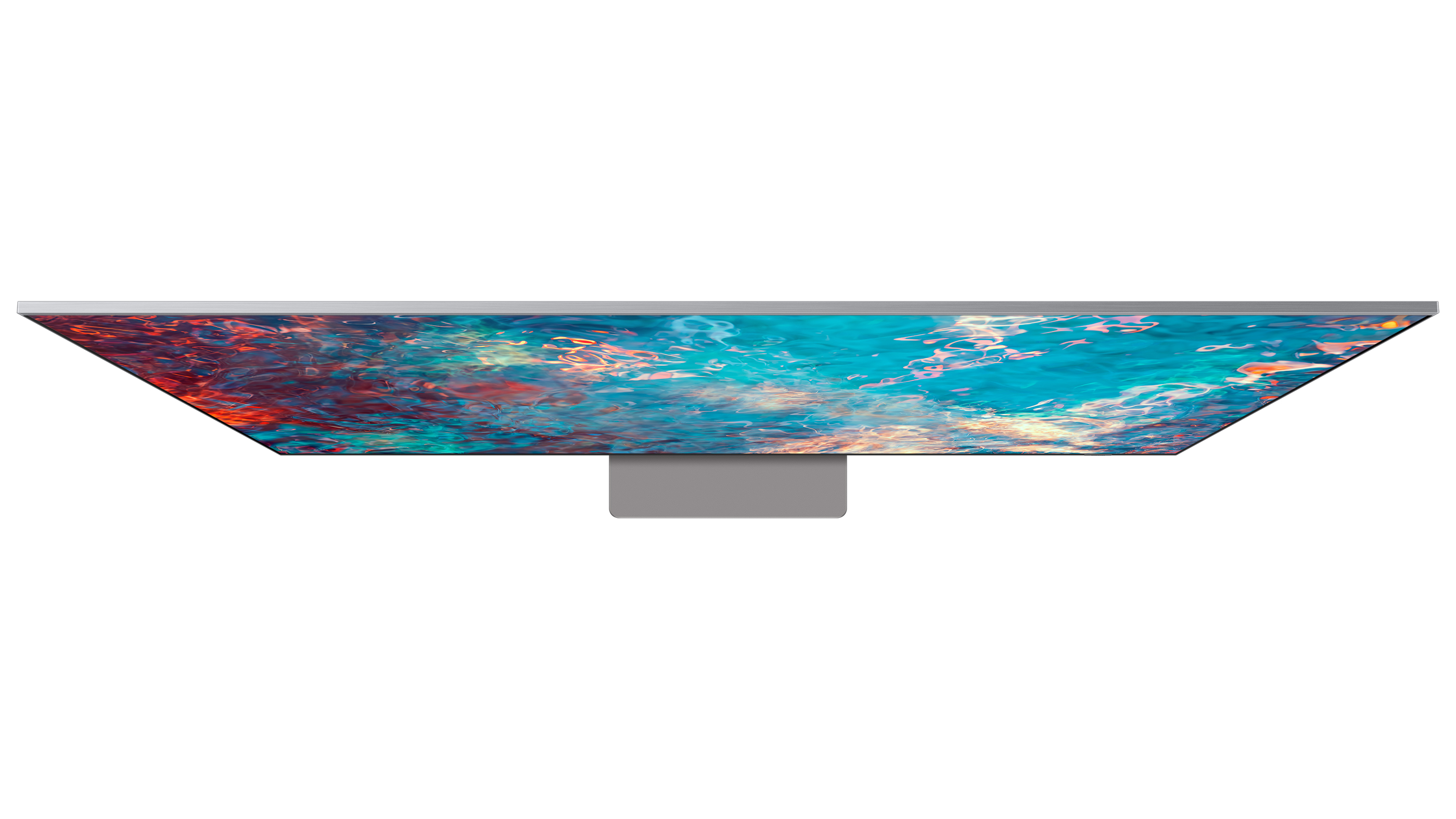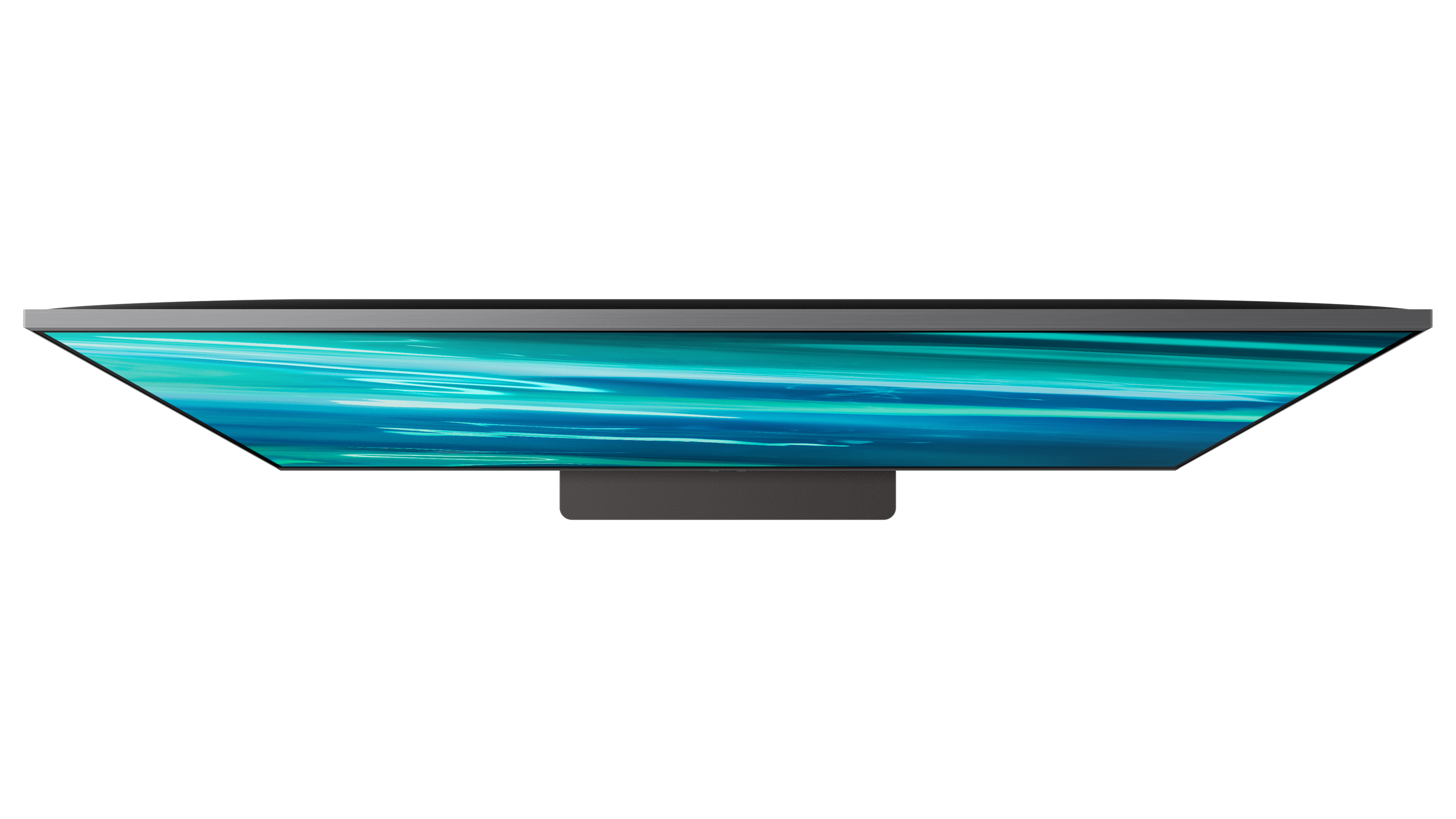Samsung Q80A vs Samsung QN85A: the differences explained
The Samsung Q80A and QN85A QLED TVs have very similar names, but only one has next-gen mini-LED technology


It you're looking at Samsung's 2021 TV line-up, you might be getting confused about the Samsung Q80A vs Samsung QN85A. Often when two model numbers are so close, there are only minor differences between the two TVs… but here the extra 'N' and '5' in the name are a big deal.
That's because while the Samsung Q80A is very similar to Samsung's previous TVs – offering a QLED screen with regular LED backlighting – the Samsung QN85A is actually the cheapest TV from the company's range to include next-gen mini-LED backlighting, which it calls 'Neo QLED'.
Mini-LED is exactly what it sounds like – LEDs up to 40 times smaller than usual – which means that Samsung can pack many more into the set, offering big brightness, and much better localised dimming control.
However, even without this new backlight features, the Samsung Q80A sits at the top of the regular QLED line-up, and retains most of the same features otherwise, for a lower price. These will be two of the best 55-inch TVs of 2021 when it comes to balancing price and performance, but will hope to stake a claim in our guide to the best gaming TVs, as well as the best TVs overall at all sizes.

The Samsung QN85A is one of the company's new 'Neo QLED' sets.
Samsung Q80A vs Samsung QN85A: Price and screen sizes
As the entry-level Neo QLED model, the Samsung QN85A benefits from competitive pricing, and concentrates on larger screen sizes with 55-inch ($1,599/£1,799), 65-inch ($2,199/£2,499), 75-inch ($2,999/£3,799) and 85-inch ($4,499/£4,999) panels.
This is a little less than Samsung's flagship 4K Neo QLED TV, the QN95A, though the difference isn't massive. You can read our full Samsung QN95A review here, if you want to hear more about that set.
The Samsung Q80A comes in at much lower prices, and actually offers a wider range of screen sizes, with 50-inch ($1,199/£1,299), 55-inch ($1,299/£1,399), 65-inch ($1,699/£1,999), 75-inch ($2,599/£2,699) and 85-inch ($3,699) options.
Get all the latest news, reviews, deals and buying guides on gorgeous tech, home and active products from the T3 experts
To bag a better price, it's worth checking our Samsung discount codes.
Samsung Q80A vs Samsung QN85A: Design & connections
The Samsung QN85A is part of the company’s new Neo QLED line-up and sports an attractive and minimalist design with a slim panel thanks to its mini-LED backlight. There’s virtually no bezel around the screen, and the TV sits a solid silver stand finished in brushed-metal.
At the rear are the connections, with four HDMI 2.1 inputs that support 4K 120Hz, Variable Refresh Rate (VRR), AMD FreeSync, Auto Low Latency Mode, and eARC. Other connections include USB ports, an optical digital output, a line output, and an Ethernet port, along with Bluetooth and dual-band Wi-Fi.
The Samsung Q80A uses a more traditional LED backlight, and is thus not quite as thin, but it retains a pleasingly minimalist and stylish finish. It also benefits from Samsung’s usual high-quality fit and finish, making this model really great value.
The Q80A only has one HDMI 2.1 port with support for next-gen features, but has three other HDMI 2.0 connections, which are still great for 4K HDR. You also get USB ports, an optical digital output, a line output and an Ethernet port, plus Bluetooth and dual-band Wi-Fi.

The Samsung Q80A may not be mini-LED, but Samsung knows how to do great LED screens.
Samsung Q80A vs Samsung QN85A: Picture quality
The Samsung QN85A uses local dimming combined with a mini-LED backlight, resulting in improved brightness and contrast over the Q80A, and the TV produces fantastic HDR images. There’s support for HDR10, HLG and HDR10+, but not Dolby Vision. The Neo Quantum Processor 4K uses deep-learning algorithms to optimise picture quality and manage the new backlight's extra precision. The new Game Bar brings all the gaming features into a single convenient location, and the input lag is an impressive 9ms.
The Samsung Q80A doesn’t use mini-LED or the Neo Quantum Processor, but otherwise the two TVs are fairly similar, with a direct backlight and local dimming – the dimming just isn't quite as precise in this model. The brightness and contrast is excellent, the colours are saturated thanks to QLED, and the HDR performance will impress overall. There’s support for HDR10, HLG, and HDR10+, but again no Dolby Vision. The Quantum Processor 4K will help get the best out of lower resolution content, while for gamers there’s the Game Bar and an input lag that’s also below 10ms.

Despite being thin, the QN85A has speakers all around the edges.
Samsung Q80A vs Samsung QN85A: Sound quality
The Samsung QN85A and Q80A might be similar in terms of picture quality, but when it comes to sound quality the two TVs are virtually identical. Both use Object Tracking Sound technology, which is composed of six built-in speakers, and allows sounds to be steered around the screen to match the action.
This dynamic 3D audio is combined with AI Sound to produce an acoustic experience that’s tailored to your environment. Neither TV has onboard Dolby Atmos decoding, but can pass Atmos from their smart TV apps out to a soundbar or AV receiver.
Both TVs support Q Symphony for synchronising their speakers with compatible Samsung soundbars, making the TV speakers and soundbar speakers combine to offer a bigger soundstage.
Samsung Q80A vs Samsung QN85A: Smart TV
The Samsung QN85A and the Q80A both sport the company’s Tizen-powered smart TV platform which is employed on every QLED TV up to and including the flagship models.
The system’s launcher bar is slick, responsive, informative and highly intuitive to use, with a choice of every essential TV catch-up and video streaming service. There’s a solar-powered remote control, the SmartThings app, and a Universal Guide to make finding content easier. These TVs also work with Alexa and Google Assistant, allowing for basic voice control.

It's not as thin as the Q85A, but the Q80A offers a lot of TV for the money.
Samsung Q80A vs Samsung QN85A: Conclusion
The Samsung QN85A offers a stylish design and slim LCD panel thanks to its mini-LED backlight, which also offers improved local dimming and brightness. That's paired with AI-enhanced processing and quantum dots for improved detail, contrast and colours.
Once you add the immersive sound, comprehensive smart platform, and extensive gaming features, the result is a superb all-round TV that proves even entry-level Neo QLED is a cut above the average, though its price is dangerously close to the even-better Samsung QN95A.
The Samsung Q80A may not be quite as cutting-edge in its tech, but it’s not far behind, offering most of the same features for a lower price. The direct backlight might not use mini-LED, but there’s still local dimming, top-notch processing and quantum dots to ensure impressive 4K HDR pictures. The minimalist design is simple but effective, while the sound, smarts and gaming features are identical to the QN85A. So if you’re on a tighter budget, the Q80A offers plenty of QLED bang for your buck.

Steve Withers is a professional calibrator and freelance journalist who regularly contributes to T3, reviewing audio and video products, and writing articles. Steve has been writing about audio and video products for over ten years and, along with T3, he also contributes to TechRadar, Trusted Reviews, Expert Reviews, AVForums, Pocket-lint, Home Cinema Choice, and Wired. Steve is Level 2 certified with THX, the Imaging Science Foundation (ISF) and the Home Acoustics Alliance (HAA). As such, he remains abreast of all AV technology developments and the latest industry standards as we transition into a new era in home video and audio.